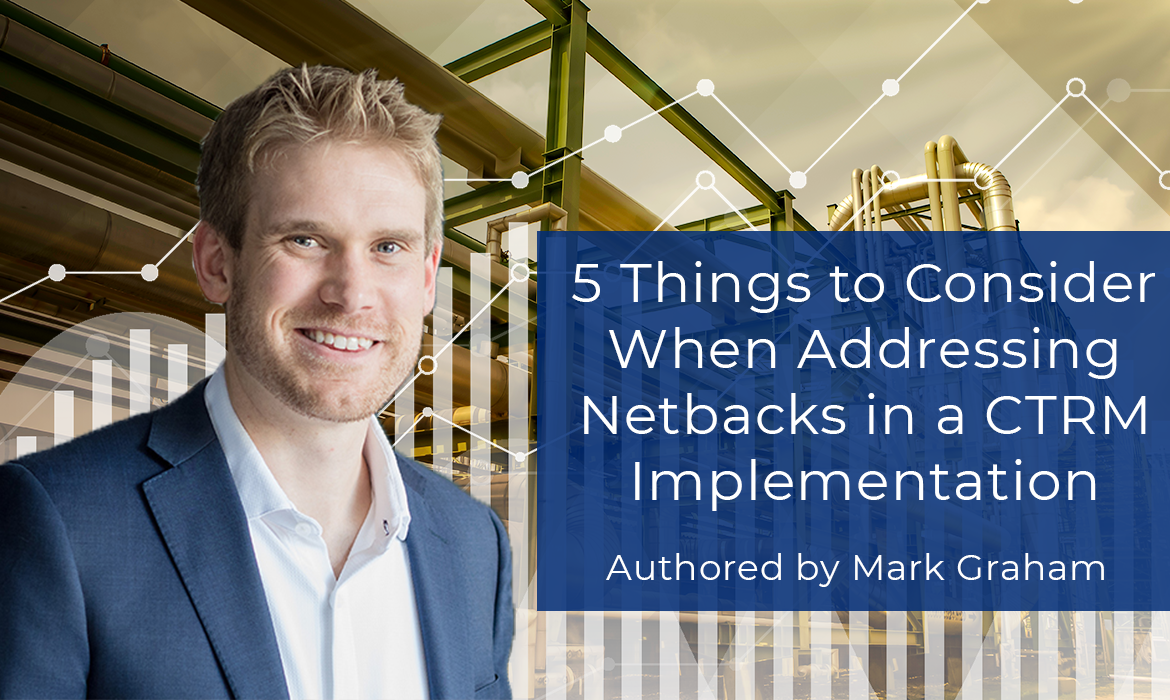There are lots of complications for E&P companies when implementing solutions. One of the more common ones is netbacks. Considerations must be taken to help drive value in this area whether it is a production revenue accountant having to deal with calls from royalty interests or a marketing manager having to explain why pricing changed month to month.
The underlying idea of netback is not complex, royalty interests are given a percentage of revenue based on the price that was sold for a well’s production. The higher the product is sold for, the higher the revenue for both. Marketing companies can typically increase profitability by moving the product further downstream, which requires additional transportation costs. Royalty interests can participate in the higher sales price/revenue, but they also must help pay for the marketing costs required to get the product to the downstream sales location. Marketing companies ‘net’ the costs back to royalty interests as deducts. However, in order to protect royalty interests from participating in unnecessary costs, various regulations have been put in place limiting deducts that can be netted back by a marketer. This is where netback begins getting complex.
From a legal standpoint, regulations (i.e. state, federal, or Indian) can vary depending on the product or the location of the lease. From a commercial standpoint, netback requirements and lease agreements can differ dramatically from company to company, and with turnover increasing more than ever, the opportunity to overlook or not fully understand how the netback is being calculated, especially when it is automated in a system, can have consequences for an oil and gas company. A slight configuration error in the netback solution can affect a company’s bottom line by pushing incorrect costs back to royalty interests and open the company up to legal proceedings by unknowingly breaking regulations protecting royalty interests.
Netback calculations are usually done in either an accounting system, CTRM system or a combination of both. An accounting system can receive prices and deducts associated with the CDP or property from a CTRM system. Companies choose to upgrade/implement either a CTRM or an accounting system, but not both simultaneously. The technical constraints and business processes for users of both systems add additional complexities to a potential netback solution and should be addressed during an implementation.
Netback solutions have to be flexible in order to handle varying complex business requirements and regulations. Below are 5 capabilities that need to be considered carefully when addressing netbacks in a CTRM implementation:
1. Ability to capture and separate costs between products
For natural gas, companies can only net back costs once a product gets to a marketable location. Typically, gathering costs cannot be netted back to royalty interests for natural gas, since it technically is not marketable until it is processed. However, gathering costs can be netted back for natural gas liquids. Since the natural gas stream, before reaching the processing plant, contains both methane (Natural Gas) and Y-grade/NGL’s (Natural Gas Liquids), there is a potential legal argument that can be made for allowing gathering charges associated with the liquids portion of the gas stream to be netted but not for the natural gas portion. It is important that the netback solution is flexible enough to capture and separate costs between various products throughout the transportation supply chain.
2. Ability to capture utilized and unutilized capacities
For marketers who use firm transportation, usually only the utilized portion of the capacity can be netted back, leaving the marketer responsible for all unutilized capacity. This incentivizes marketing managers to optimize the firm transportation being purchased and sold. The netback solution must be robust enough to capture a variety of scenarios around utilized and unutilized capacity by product, location, contract, etc.
3. Ability to convert and process results in the proper unit
For Natural Gas, contractual requirements determine if royalty payments are paid on a $ per volume ($/MCF) or $ per energy ($/MMBTU) basis. It is important that the solution can process results in the proper unit depending on the business requirements. This may require capturing gas analysis, BTU factors, pressure bases, etc. associated with the CDP/property in order to convert energy to volume or vice versa when required.
4. Ability to include and exclude imbalances
Companies can either chose to ignore imbalances or include them in their netback calculation for price and/or deducts. From a technical standpoint, this decision either includes the value associated with the imbalance in the imbalance month or defers it to future months. In reality, this just defines whether price or value is netted back. Netback solutions need to be flexible around including and excluding imbalances by product, price, and deducts.
5. Ability to include and exclude fuel losses
Various fuel losses can be considered deducts. Fuel losses can either be treated as a reduction to wellhead production, monetized based on the net price at which the loss incurred, or monetized based on the WASP (weighted average sales price). Depending on the loss type, the solution needs the flexibility to include/exclude specific losses in the netback results.
Understanding these scenarios and capabilities will enable the implementation team to set-up a flexible netback solution that meets the business objectives and overcomes technical constraints. Overall, the system and project teams need to be flexible in accommodating both the businesses’ processes as well as industry standards. Without aligning all stakeholders, including the vendor and system integrators, the implementation risk increases dramatically.
At Veritas Total Solutions, we specialize in CTRM Systems including customizing netback solutions to meet our clients' business objectives. If you are interested in learning more about our specific capabilities, contract us to learn more or subscribe to our blog to stay connected.

